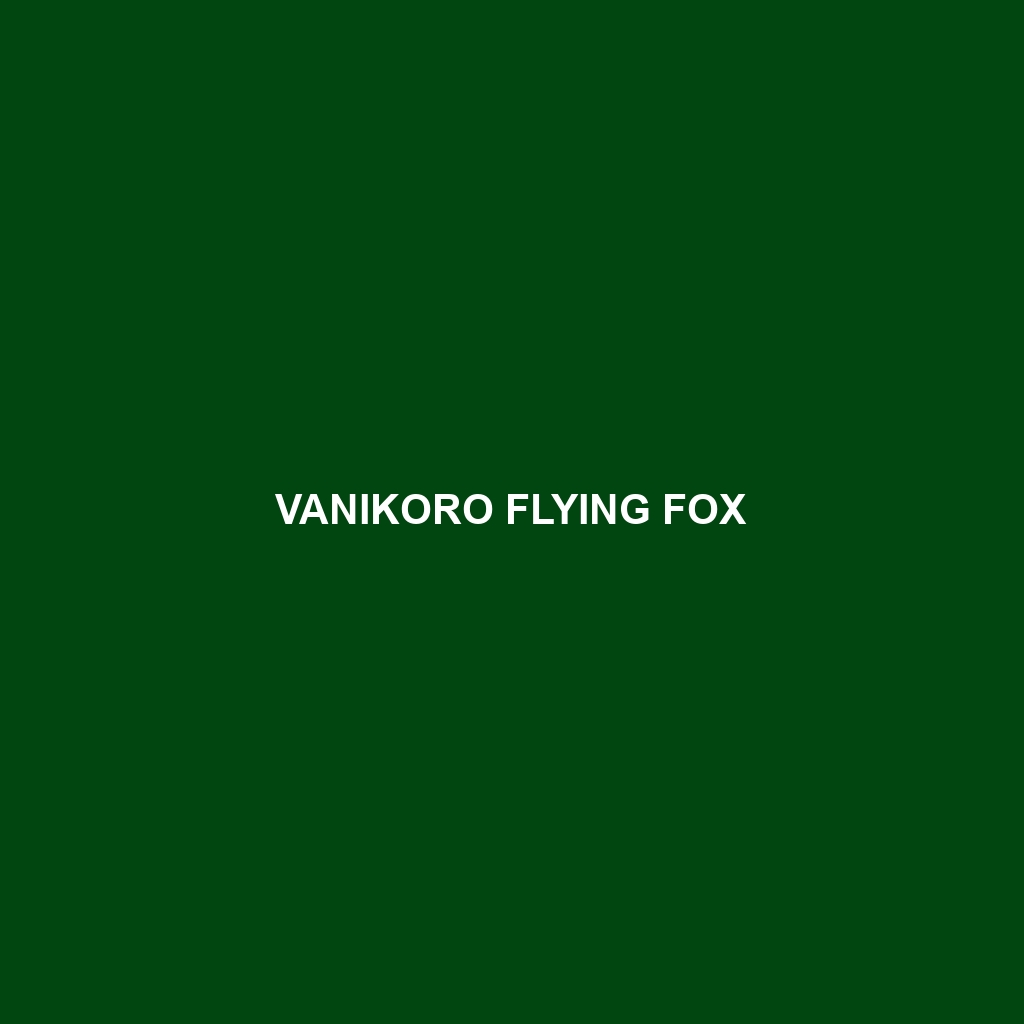Vanikoro Flying Fox
Common Name: Vanikoro Flying Fox
Scientific Name: Pteropus vetulus
Habitat
The Vanikoro Flying Fox is primarily found in the Solomon Islands, specifically on the islands of Vanikoro and the surrounding archipelago. These bats inhabit tropical rainforest ecosystems, often roosting in tall trees and areas with abundant fruiting flora, which provides both shelter and food. Their preferred environments are rich in biodiversity, contributing to the health of the forest ecosystem.
Physical Characteristics
The Vanikoro Flying Fox is a medium-sized bat, with a wingspan averaging between 1.2 to 1.5 meters (approximately 3.9 to 4.9 feet). Its fur is predominantly dark brown with lighter underparts, allowing it to blend into the forest canopy. Notable features include its large eyes and elongated snout, which are adapted for foraging at dusk and navigating through dense foliage. This species can weigh up to 600 grams, making it a robust member of the flying fox family.
Behavior
These flying foxes are nocturnal, emerging from their roosts at dusk to forage for food. They are social animals, often seen in groups, and they communicate with each other through a variety of vocalizations. The Vanikoro Flying Foxes exhibit an interesting behavior of migrating between roosting sites in search of food availability, which enhances their foraging efficiency.
Diet
The diet of the Vanikoro Flying Fox primarily consists of fruits, such as figs, bananas, and other tropical fruits. They play a crucial role as pollinators and seed dispersers in their native habitat, helping to maintain the health of the forest ecosystem. This frugivorous diet makes them important contributors to fruit tree propagation and forest regeneration.
Reproduction
The Vanikoro Flying Fox has a breeding season that typically occurs between March and May. After a gestation period of approximately 4 to 5 months, females give birth to a single offspring, which they nurse until it can fly, usually around 3 months postpartum. Notably, mothers exhibit strong maternal instincts, carrying their young as they forage.
Conservation Status
This species is currently classified as Endangered due to habitat loss, hunting, and human encroachment. Conservation efforts are essential to preserve the Vanikoro Flying Fox’s habitat and ensure its survival in the wild. Organizations are working on strategies to monitor populations and protect critical habitats within the Solomon Islands.
Interesting Facts
The Vanikoro Flying Fox is notable for its unique social structure, often forming large roosts that can include thousands of individuals. They are also known for their ability to navigate using echolocation, which aids them in locating fruit at night. Moreover, these bats have a role in local cultural practices, being featured in folklore and traditions of the Solomon Islands.
Role in Ecosystem
The Vanikoro Flying Fox is a key species in maintaining the balance within its ecosystem. By consuming and disseminating seeds from various tropical fruits, they facilitate new plant growth, which supports a diverse array of wildlife. Their pollination activities contribute to the reproductive success of many flowering plants, highlighting the interdependence within their habitat.
